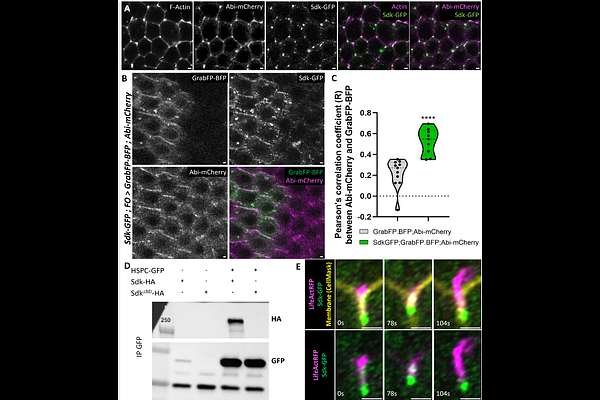Tricellular junction recruitment of the Wave regulatory complex by Sidekick and Lar induces protrusive activity resolving cell intercalation

Tricellular junction recruitment of the Wave regulatory complex by Sidekick and Lar induces protrusive activity resolving cell intercalation
Calvary, L.; Alegot, H.; Richard, G.; Pouchin, P.; Vachias, C.; Mirouse, V.
AbstractCell intercalation, a fundamental morphogenetic process characterized by the exchange of neighboring cells, plays a pivotal role in epithelial tissue development. While the initiation of new junctions remains poorly understood, recent research indicates the involvement of tricellular junction actors. In this study, we explore the contribution of the WAVE regulatory complex (WRC), a critical regulator of branched F-Actin generation, in tissue elongation and cell intercalation within the Drosophila ovarian follicular epithelium. WRC localized at tricellular junctions, where it orchestrates the generation of highly dynamic protrusions emanating from one cell and extending between the bicellular junctions of neighboring cells. This protrusive activity is essential for the initiation of new junctions in cells located at the extremities of these junctions. Furthermore, our findings indicate that WRC recruitment at tricellular junctions is a redundant process, involving the cooperative action of the two transmembrane proteins Sidekick and Lar. Disruption of this recruitment impairs protrusive activity, cell intercalation resolution, and tissue elongation thereby mechanistically bridging molecular, cellular and tissular scales. Consequently, this elucidates a critical mechanism underlying epithelial morphogenesis through actin polymerization at tricellular junctions.